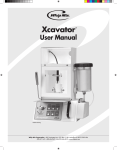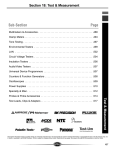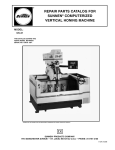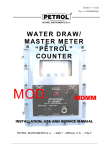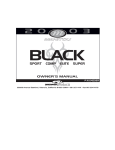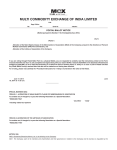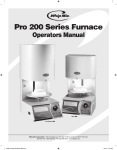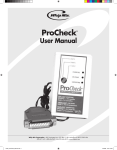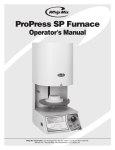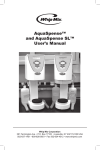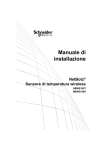Download Xcavator Instruction Manual
Transcript
Xcavator ™ User Manual Patent Pending Proudly Made in the U.S.A. Whip Mix Corporation • 361 Farmington Ave. • P.O. Box 17183 • Louisville, KY 40217-0183 USA 502-637-1451 • 800-626-5651 • Fax 502-634-4512 • www.whipmix.com 17337 Xcavator User Manual.indd 1 12/5/11 4:35 PM Xcavator Operating Instructions Intended Purpose unattended and will alert the operator when an investment mold is divested to allow efficient processing and labor usage. The Whip Mix Xcavator is designed to automatically remove 95% of the volume of investment mold material surrounding pressed ceramic restorations where manual divestment would typically be done. When used as directed, the unit will significantly shorten the total process time required to go from press oven removal to pattern retrieval. The unit can be run The unit employs state of the art robotic precision to ensure consistent material removal time after time. The Xcavator is easy to operate, ergonomically friendly and compact enough to earn its place on a work surface in the casting room. Important Topics for Safe, Reliable Operation Grounding Treat Pressurized Components With Care The high velocity flow of glass beads across plastic or metal surfaces will charge the beads and the surfaces they flow over. Great pains have been taken to ground every component in the Xcavator to insure equalization of static electrical charges. The power cord and the outlet the unit is plugged into must have 3 prongs to insure the presence of the earth ground which is vital to the prevention of static electrical charge buildup. If, for any reason, you receive a static electrical shock from any part of the equipment, you should verify the integrity of the grounded outlet the unit is plugged into, or call an electrician. Operating the unit ungrounded can result in painful shocks to the operator and damage to the electronics of the unit itself. Never strike the bead jar or pull on the connecting air tubing while the system is pressurized. This can result in cracking the plastic jar or wind up spraying glass beads or plastic debris around the area and pose a safety hazard. Particulate Exposure Never open the cabinet door while a divestment cycle is in progress. The exhaust system will pull the dust cloud towards the rear of the cabinet, but air conditioning/heating convection currents in the room could cause a portion of the dust cloud to escape into the room and pose a possible health risk. Handling of Hot Investment Molds Never cut the ground stud off the power cord or plug the unit into a 2 lead extension cord or outlet. Always use laboratory tongs to handle hot investment molds and cautiously test the temperature of divested molds before you attempt to remove divested molds from the cabinet. Dry Air Supply All compressed air condenses moisture in the air lines as a result of the physics of gas compression. This moisture can accumulate in low areas of the air piping even if there is a master air dryer at the compressor. Exhaust Flow Volume The built-in vacuum sensor will prohibit divesting unless the vacuum flow is sufficient to remove the airborne dust rapidly. If you are having dust cloud removal issues check your vacuum unit or central vacuum flow to ensure removal of the fine dust. It is recommended that a cartridge type dryer be placed just before the air regulator of the unit. If moist air enters the unit it will collect in the reservoir and cause clumping of beads and disrupt the critical air/bead ratio needed for consistent divestment. It can also plug up either the reservoir output orifice or the bead/air injector inside the injector block and cause inconsistent divestment. Divesting Media Composition and Particle Sizes Use only 50 –100 micron glass beads with the Xcavator for the following reasons: Dry Bead Supply 1. Other material types may be harder than glass beads and damage the porcelain work product. The strainer supplied with the Xcavator serves two purposes; (1) it eliminates clumped beads and foreign debris which could clog the bead transport system, (2) it validates/ invalidates the dryness of the beads. If the beads will not pass through the strainer without tapping or shaking the strainer, then they are too moist to be transported reliably. 2. Other material sizes may alter the depth of cut, and/or the cut channel width. Important NOTE: The Xcavator product has been exhaustively tested with Whip Mix brand 50 Micron glass bead media. For best and most reliable divesting results we strongly recommend you use Whip Mix brand beads. An electric Bead Dryer Belt is supplied with the Xcavator. When placed around the bead storage container it will raise the temperature of the beads and drive off any moisture the beads might accumulate. Whip Mix beads flow more reliably, and are less prone to clumping during high humidity conditions. THE USE OF ALUMINUM OXIDE (ALOX), BEADS IS NOT RECOMMENDED FOR USE WITH THE XCAVATOR. ALOX BEADS WILL POTENTIALLY CAUSE DAMAGE TO YOUR PORCELAIN BECAUSE THEY ARE HARDER THAN THE PORCELAIN. ALOX WILL ALSO CAUSE PREMATURE WEARING OUT OF THE QUARTZ NOZZLE. 2 17337 Xcavator User Manual.indd 2 12/5/11 4:35 PM Xcavator Operating Instructions Familiarization Access Door Control Panel 8 1 2 3 6 7 4 5 1. Ready indicator 2. 100 Gram cycle start key (cool mold) 3. 200 Gram cycle start key (cool mold) 4. 100 Gram time delay before start indicator (hot mold) 5. 200 Gram time delay before start indicator (hot mold) 6. Abort cycle key 7. Exhaust flow Indicator 8. Depth of cut selector switch Setup Air Supply 1. Connect your compressed air supply to the air regulator inlet hole shown in the photograph (Figures 1A and 1B). The inlet hole is a standard 1/8" National Pipe Thread (NPT). Air Regulator Setpoint Adjust 2. With air supply connected, pull knob upward, and rotate it until gauge needle points to 35 psi (Figure 2). Note: This may need to be re-adjusted slightly Figure 1A Figure 1B Figure 2 Figure 3 once bead flow is established. Push knob back downward after pressure is set. Daily Moisture Bowl Check 3. Pressing upwards on the black plastic ring at the bottom of the air regulator opens up a check valve and allows accumulated moisture to drain from the clear plastic accumulator bowl (Figure 3). It is very important to keep drained so that moisture does not pass through to the bead reservoir. Moist beads will adhere to each other and prevent transfer to the nozzle. 3 17337 Xcavator User Manual.indd 3 12/5/11 4:35 PM Xcavator Operating Instructions Setup (continued) Exhaust Port 4. Connect your central vacuum system or dedicated vacuum unit to the rear of the cabinet as shown (Figure 4). Caution: Never operate the Xcavator unit without suction inside the cabinet to prevent human exposure to fine particulate matter which can be hazardous to your health. Power 5. Connect the furnished power cord to the unit and then to any grounded AC outlet capable of furnishing 15 amps (standard branch breaker size) (Figure 5). Figure 4 Figure 5 note: Position the unit leaving enough space around the left hand side of the chassis so you can easily reach the main ON/OFF switch. 6. Place Bead Dryer Belt around the middle of the bead container and plug into a 110V wall socket. It will warm the beads to eliminate and prevent bead clumping due to moisture/humidity. Chuck Assemblies 1. There is a dedicated chuck assembly for each nominal mold size (100 & 200 gram molds) (Figure 6). The chucks are easily exchanged as work load dictates. Chuck Assembly Setup 2. Before using the divester make sure the three thumbscrews are pre‑adjusted for the type of ring-former system you use (Figure 7). If you use tapered ring-formers place a tapered investment mold in the chuck and adjust the thumbscrews inward until they contact the investment. Then withdraw them one full turn to allow enough clearance for the hot mold to slip into the chuck without interference which might cause you to lose your grip on the ring with the tongs. 100 gram 200 gram Figure 6 If you use both tapered and untapered rings of each size you will want to purchase additional chuck assemblies so that you don’t have to constantly re‑adjust the thumb screws. (See spare parts list in back of manual.) Chuck Assembly Installation 3. Select one of the two furnished chuck assemblies (100 gram or 200 gram) and place it over the two guide pins on the mounting plate inside the cabinet (Figure 8). Figure 7 Figure 8 Checking Reservoir Gasket 1. Please note the gasket in the lid of the reservoir. It is important to keep this gasket and the mating rim of the reservoir wiped free of beads to insure a good air pressure seal (Figure 9). The threads in the lid should also be wiped with a DRY cloth or brush to remove beads accumulating in the threads. Caution: NEVER use a wet cloth as the moisture will get into the reservoir and cause transfer problems. Figure 9 4 17337 Xcavator User Manual.indd 4 12/5/11 4:35 PM Xcavator Operating Instructions Filling Jar Important NOTE: The Xcavator product has been exhaustively tested with Whip Mix brand 50 Micron glass bead media. For best and most reliable divesting results we strongly recommend you use Whip Mix brand beads. Whip Mix beads flow more reliably, and are less prone to clumping during high humidity conditions. THE USE OF ALUMINUM OXIDE (ALOX), BEADS IS NOT RECOMMENDED FOR USE WITH THE XCAVATOR. ALOX BEADS WILL POTENTIALLY CAUSE DAMAGE TO YOUR PORCELAIN BECAUSE THEY ARE HARDER THAN THE PORCELAIN. ALOX WILL ALSO CAUSE PREMATURE WEARING OUT OF THE QUARTZ NOZZLE. 1. Remove the lid of the reservoir by rotating it by hand counter-clockwise. Place the strainer over the rim of the reservoir and pour the new beads into the strainer slowly, allowing time for the beads to pass through (Figure 10). Always use the strainer when filling the jar to eliminate clusters of beads, which will cause the unit to malfunction. Enclosed with your Xcavator Unit is an electric Bead Dryer Belt (Fig. 13). When plugged into a 110V socket, the belt will warm the beads to prevent clumping due to moisture. The belt will ensure that the beads flow through the strainer and transport reliably to the nozzle (Fig. 14). Fill the jar with 50 –100 micron glass beads up to the maximum fill line on the jar, then replace the jar lid by screwing it clockwise, then snugging it firmly closed by hand (Figures 11 and 12). Figure 10 Figure 11 Figure 12 Figure 13 Figure 14 IMPORTANT: Never overfill the jar as the beads require at least a half inch of head space to allow room for aerating the beads so that they will transfer. CAUTION: If the lid cannot be removed by hand after the unit has been pressurized during a divestment cycle, make sure the air flow noise has stopped and allow 30 seconds to allow any residual air pressure inside the jar to bleed off through the nozzle. If you cannot feel or hear any air at the nozzle and the lid still will not respond to hand loosening, consult the troubleshooting section at the rear of this manual. IMPORTANT NOTE: If the bead media does not flow freely through the strainer, this is an indication of excessive moisture content. Moist beads will adhere to each other and not freely separate from each other and fall through the strainer. They will cause intermittent or even complete stoppage of transport flow to the jet nozzle. The Bead Dryer Belt around the bead bucket will help prevent this moisture accumulation. 5 17337 Xcavator User Manual.indd 5 12/5/11 4:35 PM Xcavator Operating Instructions Theory Of Operation 5 –15 minutes to hand divest, you can remove the mold from the press furnace, press the corresponding delay cycle button and the Xcavator will announce when the mold is 95 percent divested with a beeping sound, and the green Ready light will be lit. The divested mold will now be cool enough to remove from the Xcavator by hand, and touchup the remaining 5 percent by hand in as little as 30 seconds. The Xcavator is designed to remove 95 percent of investment material from a 100 gram or 200 gram investment mold unattended. It will shorten the overall press to pattern recovery time significantly. Instead of removing a hot mold from your pressing furnace and waiting up to 50 – 60 minutes for it to cool to a safe bare hand handling temperature then spending another How Does it Work? The nozzle swing arm is also controlled by a robotic grade precision stepper motor to digitally position the nozzle along each concentric cutting track with minimal overlap and high repeatability. The Xcavator uses a robotic grade precision stepper motor to digitally turn the investment mold in an ultra-precise rate of rotation. This rotation is computer controlled to spin slowly at the outside periphery of the mold and slowly accelerate as the swing arm approaches the center of the mold rotation. This precision is the key to controlling the depth of cut and the uniformity of material removal across the horizontal material removal plane. Controlling the Depth of Cut An Important Note Regarding Air Pressure There are four factors which affect the depth of cut in a given mold: Even though the incoming air pressure is perhaps higher than you would normally select for manual divestment, the direct comparison is not physically valid for the following reason; when manually divesting the nozzle is within less than a centimeter of the glass pattern. The Xcavator jet nozzle NEVER comes within 2– 3 centimeters of the glass pattern and is in CONSTANT MOTION, making it impossible to dwell over any given spot on the glass pattern for more than a few seconds. The increased distance effectively drops the pressure level of the air propelling the beads so that by the time they reach the glass pattern the kinetic energy the beads transfer to the glass is actually less than with a manual divester. 1. Air Pressure 2. Spindle Rotation Speed (as set by the Depth of Cut Knob) 3. Density of Investment Material AND Concentration of Special Liquid. 4. Bead Media Size and Hardness As a rule of thumb, the air pressure should be set to the lowest psi value that will yield satisfactory cuts throughout the range of investment brands and concentrations by adjusting ONLY the 16 position spindle speed selector knob. Whip Mix has determined that 35 psig is the pressure setting which will cover the entire spectrum of currently available brands and concentrations. The hardest and highest density investment should be run on a Depth of Cut setting towards the higher numbered positions while less dense investments should be run on the lower numbered settings. You should use only one type and size of bead media. In practice, the only one of these interactive factors remaining variable should be the Depth of Cut Selector knob. 6 17337 Xcavator User Manual.indd 6 12/5/11 4:35 PM Xcavator Operating Instructions Before You Commission for Every Day Use CALIBRATE EACH BRAND OF INVESTMENT OVER THE RANGE OF CONCENTRATIONS YOU ARE USING. Typical settings for Whip Mix Formula 1 Investment: [In order from the hardest to the softest] We recommend you pour up some empty test molds for each brand of investment you use at the minimum and maximum liquid concentrations and burn them out, then perform test divestments and record the spindle speed selector switch settings to bracket the lowest concentration, least dense mold (lower numbered speed settings) and the highest density, highest concentration mold. When you are comfortable that you can span the entire range of mold densities, you can fill in the intervening concentration values. Air Pressure – 35 psi on the regulator gauge. Bead Media - 50 micron to 100 micron pure glass beads Investment Type: Whip Mix Formula 1 Liquid Concentration Again, for the maximum protection of your work product, and the most consistent results, we recommend you keep the air pressure constant and utilize the Depth of Cut knob to alter the spindle speed/cycle time to yield the desired depth of cut. We recommend that you calibrate your depth of cut to land in a horizontal plane midway between the bottom of the central glass button, and the top of the glass button where the sprue(s) join. Depth of Cut Setting 100% Switch Position # 5 90% Switch Position # 5 80% Switch Position # 4 70% Switch Position # 4 60% Switch Position # 3 50% Switch Position # 3 40% Switch Position # 2 30% Switch Position # 2 Fill in the data corresponding to the Investment type you use. Note: Data must be derived from actual pressed rings as the hardness of the rings increases after the pressing heat cycle. Testing blank molds which have been through the burnout cycle, but not the pressing heat cycle will give misleading results due to the hardening effect of the pressing heat cycle. Investment Type: Liquid Concentration Investment Type: Depth of Cut Setting @ 35 PSI Liquid Concentration Depth of Cut Setting @ 35 PSI 100% Switch Position # 100% Switch Position # 90% Switch Position # 90% Switch Position # 80% Switch Position # 80% Switch Position # 70% Switch Position # 70% Switch Position # 60% Switch Position # 60% Switch Position # 50% Switch Position # 50% Switch Position # 40% Switch Position # 40% Switch Position # 30% Switch Position # 30% Switch Position # Investment Type: Liquid Concentration Investment Type: Depth of Cut Setting @ 35 PSI Liquid Concentration Depth of Cut Setting @ 35 PSI 100% Switch Position # 100% Switch Position # 90% Switch Position # 90% Switch Position # 80% Switch Position # 80% Switch Position # 70% Switch Position # 70% Switch Position # 60% Switch Position # 60% Switch Position # 50% Switch Position # 50% Switch Position # 40% Switch Position # 40% Switch Position # 30% Switch Position # 30% Switch Position # 7 17337 Xcavator User Manual.indd 7 12/5/11 4:35 PM Xcavator Operating Instructions Step By Step Directions For Use Step 1 Know your material brand and mix concentration percentage. Step 2 Make sure there is at least 3 inches of bead media showing inside the reservoir to ensure completion of the current mold divestment. Step 3 Select the mold chuck size which corresponds to the ring size (100 gram or 200 gram) (Figure 1). 100 gram Step 4 Open the door on the Xcavator by swinging the handle towards you (Figure 2). 200 gram Figure 1 Step 5 Insert the chuck onto the mounting plate (Figure 3). Step 6 Remove the freshly pressed hot mold from the pressing furnace. Pick up the still hot mold with tongs and place it on the open door of the Xcavator momentarily (with the press plunger facing up) (Figure 4) then reverse the forceps and re‑grip the mold as close to the door as possible and flip the mold inverted so that the press plunger is now facing downward. Step 7 Place the mold on the three threaded screws inside the chuck assembly so that the mold is centered between the three posts. Release the tongs and withdraw them (Figure 5). Figure 2 Figure 3 Figure 4 Figure 5 Figure 6 Figure 7 Step 8 Close the door by swinging the handle up and away from you. The Ready/Idle LED will be on*, signifying the unit is ready to begin divestment (Figures 6 and 7). * As long as the unit senses flow in the dust exhaust system. CAUTION: Do not defeat this safety feature, nor operate the unit with the door open. The dust given off by the airborne investment particles can be hazardous to your health. 8 17337 Xcavator User Manual.indd 8 12/5/11 4:35 PM Xcavator Operating Instructions Step By Step Directions For Use (continued) Step 9 Position the Depth of Cut Selector knob to the pre‑determined position for the type of investment and the concentration of the mix for the specific mold you just put in the Xcavator (Figure 8). Step 10 Press the Delay button corresponding to the mold size you just put in the Xcavator. You can go about other duties until the Xcavator beeps and the Ready LED lights (Figure 9). NOTE: If the mold has cooled naturally for more than 10 minutes you can bypass the time Figure 8 delay function by pressing the “Active” button for the given ring mass and the divesting cycle will start immediately. CAUTION: DO NOT OPEN THE CABINET DOOR UNTIL THE READY LIGHT TURNS GREEN AND THE BEEPER BEEPS. OPENING THE CABINET PREMATURELY (BEFORE THE BEEPER) CAN ALLOW HAZARDOUS DUST PARTICLES TO ESCAPE INTO THE room. Step 11 Open the door and remove the 95% divested mold by hand, as it will now be cool enough to handle safely with your bare hand (Figures 10). Step 12 Use your manual divester briefly, if necessary, to remove any material “shadowed” by the sprue arms or inside the hollows of the copings. Figure 9 Figure 10 9 17337 Xcavator User Manual.indd 9 12/5/11 4:35 PM Xcavator Operating Instructions Maintenance Maintenance Schedule Jar Lid Gasket Cleaning Suggested Frequency: Weekly Over time, bead fragments and dust can worm their way up into the retention groove of the Jar Lid and cause air to escape from the jar, which is one of the two primary reasons for loss of cutting depth (The other reason is the O-Ring displayed in the pictorial on page 11). This simple procedure can be quickly performed to restore the proper cutting depth. General Cleaning The inside of the plastic shield may become statically charged and coat over with dust from time to time. Use a clean damp cloth or paper towel to wipe it clean. The cabinet exterior may be cleaned with a damp cloth. Excess bead/investment debris inside the unit may be swept into the slot opening inside the cabinet using the brush provided with the Xcavator. When the drawer below becomes full it can be removed by pulling it towards you [support underneath with your other hand] and fully withdraw from the cabinet for transport to a recycling unit or disposal container. Use a DRY cloth or paper towel to clean the threads of the cap. Unscrew the Jar Lid and use a dry cloth to clean the dust and/or any beads adhering to the square Gasket in the lid as shown in the picture above. If the gasket is not seated flat in the groove, pry it loose and remove it. Once removed, clean all surfaces with the dry cloth and also clean the groove. Never use water or any other liquid to clean the Gasket as it will promote bead clumping. Replace the square Gasket in the groove. Screw the lid onto the jar until tight, then remove it and inspect the Gasket positioning. If the Gasket is not sitting flat in the groove repeat the process until it is flat. If there are still waves or bulges in the Gasket, replace it with a new Gasket. This plastic bowl should be checked weekly to see if moisture has accumulated. If it has moisture, you can drain it by grasping the black plastic ring underneath the clear bowl and pushing it upward. This will open a check valve allowing the incoming air pressure to blow the bowl empty. Note: you will hear the whooshing noise of the air escaping while you have the black plastic ring raised Simply release the black plastic ring when the bowl is empty and a spring will snap it back into place, closing the relief valve. The whooshing noise should cease. If it does not, simply push up and release the ring until the noise disappears. 10 17337 Xcavator User Manual.indd 10 12/5/11 4:35 PM Xcavator Operating Instructions Maintenance (continued) Nozzle Tip O-Ring Cleaning and Replacement 4 Over time, bead fragments and dust can worm their way around the O-Ring and cause air to escape from the Wand, which is one of the two primary reasons for loss of cutting depth (The other reason is the Lid O-Ring). This simple procedure can be quickly performed to restore the proper cutting depth. 3 Unscrew the Nozzle Cap (#1 in the pictorial) and remove the small O-Ring (#2 in the pictorial) . Clean any dust or grit from the O-Ring with a dry cloth. Never use water or any other liquid to clean the O-Ring as it will promote bead clumping. The O-Ring will have a flattened shape when removed, but will spring back into a donut shape after a couple of minutes. This is entirely normal. 2 Clean the Nozzle Cap interior by blowing it out or wiping with a Q-tip or other dry material. Reassemble in the order shown in the pictorial. Tighten the Nozzle Cap moderately. The O-Ring should be changed monthly. There are 12 spare O-Rings in the accessory box; enough to last 1 year. Additional packages of 12 may be re‑ordered with item #5, part number shown at right. 1 Nozzle Replacement The nozzle should give at least 6 months of service under moderate usage (8 –10 rings / day). You can tell when the nozzle requires replacement by noticing whether the depth of cut becomes significantly shallower than when the tip was new (provided the air pressure setting and Depth of Cut settings have not been altered). Description Item # 1. #5332-2 Nozzle Cap 2. #5332-1 Nozzle Tip & O-Ring 3. #5332-4 Wand 4. #5332-3 Tube 5. Pkg. 12 O-Rings 09830 09807 09831 09832 09818 Note: The O-Ring goes inside the nozzle cap AFTER the nozzle. Remove the O-Ring, then the old nozzle from the nozzle cap. Place the new nozzle into the nozzle cap, allowing the nozzle to drop into the hole in the cap. Place the new O-Ring provided on top of the new nozzle. Turn the Xcavator power off. Open the front door of the Xcavator and reach in and grasp the cutting hand piece and swing it into the center of the door opening. Unscrew the Nozzle Cap on the lower end of the Wand by turning it clockwise. When viewed from above the Wand, the nozzle and the O-Ring should separate from the Wand and you can withdraw these three items in your hand. (See pictorial at right.) Re-attach the three pieces to the end of the Wand by screwing the Nozzle Cap counter-clockwise when viewed from above the Wand. 11 17337 Xcavator User Manual.indd 11 12/5/11 4:35 PM Xcavator Operating Instructions Troubleshooting Diagnosing Cutting Issues should be full of beads. You can tell this by placing your finger behind the tubing and if the tubing is full of beads you will not see the shadow of your finger behind the tubing. Typical cutting issues result in investment molds which are not fully divested or are not divested at all. An example might be a single hole at the initial starting point at the outside of the investment mold as shown in figure 1. If the tubing develops air bubbles or runs completely dry (turns almost transparent) and the Bead Jar has Beads, this is the moisture gluing the beads together at the bottom so they won’t pass into the tubing (even with 35 psi pressing down from the top of the Bead stack). When this happens, the best remedy is to scoop out or vacuum out the beads and refill the jar with dry beads. Another example might be a skipping circular groove as shown in figure 2. If the investment mold platform is rotating during the cycle but you have either of the two removal patterns above then the cause is a lack of bead flow to the tip of the cutting wand. Figure 1 Moisture in the Supply Air Typical cutting issues result in investment molds which are not fully divested or are not divested at all. An example might be a single hole at the initial starting point at the outside of the investment mold as shown in figure 1. If the beads are dry going in, but demonstrate the tendency to accumulate moisture once inside the bead jar, then the source of the moisture is the air supply itself. Figure 2 This can range from micro drops of moisture too fine to see with the eye to a visible vapor which rapidly accumulates inside the clear plastic catch bowl on the bottom of the air regulator. (The air regulator is located on the back of the Xcavator cabinet and has the pressure gauge on it). The most likely cause for lack of continuous bead flow is an elevated moisture content in the beads. This can happen in the bead storage bucket, which is why it is important to keep the Bead Dryer Belt and plugged in to keep the beads warm enough to prevent moisture accumulation. Make sure you plan ahead and add the Bead Dryer Belt to the bucket of beads the day before needed. The Bead Dryer Belt is a low wattage heater and it will take 12–18 hours to warm the beads. If the air supply is far away from the Xcavator, moisture may collect in low spots inside the delivery lines. If moist air is a chronic problem, cartridge dryers may be obtained from WW Grainger or a plumbing supply company and fitted just ahead of the air regulator to dry the air before it enters the Xcavator. The best way to judge whether the beads have taken on moisture in the bead bucket is to observe how they flow through the grey plastic strainer as you refill the jar. If they stack up on top of the mesh and you have to tap on the strainer to get them to flow through, this is an indication of high moisture content. Dry beads will flow through the strainer in a uniform flow within five seconds. Note: Non Whip Mix brand beads may flow through the strainer yet still stack within the bead jar. Depth of Cut First, check the obvious causes: 1. Check that the Knob selection is correct for the investment type and special liquid concentration. 2. Check incoming air pressure is 35 psi on the Air Regulator gauge. 3. Verify the bead level in the jar is slowly dropping. 4. Clean/replace nozzle tip. The trick to keeping the beads dry is to make sure the storage temperature is five degrees or so above the room temperature, this is the reason the Bead Dryer Belt is included with your Xcavator system. If the depth of cut is uniform (no skipping or holes as in the diagrams above) but the depth of less than normal (for your regular knob setting) then the cause is a pressure loss in the air system. The block diagram on page 13 shows the bead transfer system and how the incoming air powers and accelerates the beads to the needed velocity to do the work of removing the investment: An indication of high moisture content once the beads are in the jar can be seen when the unit is in operation. The beads inside the jar should “cave-in” on themselves every thirty seconds or so, such that the “funnel” at the top surface of the beads has a gentle slope. If the funnel resembles a vertical “pipe”, extending more than one-half inch or so down into the beads, it is the elevated moisture content causing them to stick together like glue. Another indication is the two inch plastic tubing on the bottom of the bead jar closest to the front of the Xcavator 12 17337 Xcavator User Manual.indd 12 12/5/11 4:35 PM Xcavator Operating Instructions Troubleshooting (continued) Reference the diagram above as you read the description below. Mold Not Cut to Center – Premature Cycle Termination The air pressure is regulated to 35 psi in the air regulator and turned on and off in the air valve, then passes into the brass manifold block where part of the air goes upward into the top of the bead jar and presses downward on the beads. The rest of the air travels to the left in the diagram and gets mixed with beads in the bead injector. The combined bead/airstream exits the brass manifold block at the left in the diagram and travels via the black tubing to the wand and finally out the tip where the mixture collides with the top of the investment mold, removing the investment material. Press the Abort key to reinitialize the system, then deliberately select a smaller ring size cycle (usually 100 gram) to finish the mold in progress. The most likely cause is fluctuating or low volume flow of the vacuum sensor during the run. Replacing the dust collector bag is the best way to increase the vacuum air flow. Oblong Cutting Inside Mold The mold is not centered inside the chuck or the wrong (too large) chuck is installed or a non‑standard ring‑former was used. The entire system, including the bead jar is pressurized to 35 psi. If any leaks occur, this reduces the velocity of the beads and hence lowers the cutting force. Jet Begins Cutting Too Far Inside The Mold 1. Wrong Cycle selected (TOO SMALL) 2. Internal synchronization lost – Press Abort key to re-synchronize 3. Chuck assembly not seated over the two index pins on the mounting plate The two primary locations where leaks can develop are in the two O-Ring seals. Beads can worm their way underneath the sealing surfaces, creating a path for air to escape. (See O-Ring Seal #1 in the Jar Lid and O-Ring Seal #2 in the wand in the diagram above) The procedure for cleaning the O-Ring Seals is described in detail in the Maintenance section of this manual. 13 17337 Xcavator User Manual.indd 13 12/5/11 4:35 PM Xcavator Operating Instructions Troubleshooting (continued) Adjusting the Wand Height for Optimum Results Diagnosing Non-Cutting Issues The default wand height setting may not be optimized for your conditions to produce the desired uniformity of the cut. If the Ready/Idle indicator is off AND one of the cycle indicators is lit, press the Abort key, which should cause the cycle indicator to first extinguish, then after a few seconds (and the swing arm going to the rear most park position) the Ready/Idle indicator should light. No Ready/Idle Indication If the Wand is too close to the top of the investment mold’s top surface, you may get concentric “tree ring” patterns with thin partitions between the “grooves”. If this is undesirable, you can loosen the thumbscrew holding the wand to the swing arm and raise the wand approximately 1/8". This will allow for a wider “groove” or “track” during cutting so that you don’t have the thin partitions between “tracks”. If the Ready/Idle indicator is off AND the Exhaust Flow is off, please see “Vacuum Fault Indication” below. If the Ready/Idle indicator is off AND no other indicators are lit, please see “No Indicators Lit” below. A word of caution though, the farther away the Wand is from the top of the investment mold, the less cutting force at a given knob setting. You can compensate for the reduced depth of cut by increasing the knob setting by one “click” clockwise. Vacuum Fault Indication If the Vacuum indicator is lit, even when connected to a running vacuum source, place your hand over the exhaust port inside the cabinet. You should feel moderate suction. If not, check the filter bag in your exhaust system. If you still do not get the Exhaust Flow indication, pinch the sensor tubing to see if there is any blockage in the sensor line, or remove the tubing and manually blow it clear of debris with an air jet. Replace the tubing and press the Reset button. The Exhaust Flow indicator should now be lit. If not, Call Technical Support. The maximum recommended gap between the end of the cutting tip and the top of the investment mold should not exceed 5/16" of an inch or else the outer wall of the investment mold will be penetrated and this will significantly alter the flatness of the “floor” of the resulting divested area. (See below) Wand Too Close Leaves “Partitions” Spindle Does Not Turn And/Or Swing Arm Does Not Move But LEDs Lit 1. Check Cable Connections 2. Call Technical Support No Indicators Lit 1. Make Sure Outlet Has Power 2. Check Fuses 3. Call Technical Support Wand Too Far Penetrates Outer Wall And Creates a “Hump 14 17337 Xcavator User Manual.indd 14 12/5/11 4:35 PM Xcavator Operating Instructions Specifications Line Voltages: 100 VAC, 60 Hz 115 –120 VAC, 60 Hz 208 – 240 VAC, 50 Hz Use Fuse Type: 5 x 20 mm 2F Use Fuse Type: 5 x 20 mm 2F Use Fuse Type: 5 x 20 mm 2F Fuse Rating: 2.0 Amps Fuse Rating: 2.0 Amps Fuse Rating: 2.0 Amps Dimensions: 19.25 in. (48.9cm) Height, 14.5 in. (36.9cm) Width, 15.5 in. (39.4cm) Depth Product Weight: 29 lb (13.1 kg) Shipping Weight: 36 lb (16.3 kg) Investment Mold: 100 gram; typically 1.4 inches in diameter by 2 inches tall 200 gram: typically 2.2 inches in diameter by 2 inches tall Delayed Start Times: 100 g Delay = 6.25 min 200 g Delay = 9.6 min Environmental Specifications Intended for indoor use within operational parameters. Fluctuations of main power supply not to exceed +/- 10% of nominal voltage. Altitude: up to 2000 meters (6,560 ft.) Temperature:13°C to 41°C (55°F to 105°F) Maximum relative humidity of 70% for temperatures up to 35°C (95°F) decreasing linearly to 50% relative humidity at 35°C (104°F) Pollution Degree:1 Installation Category:2 Divestment Times Selector Position 100 gm Cycle Time 0 1 2 3 4 5 6 7 8 9 10 11 12 13 14 15 2.51 min. 2.64 min. 2.77 min. 2.92 min. 3.08 min. 3.27 min. 3.48 min. 3.71 min. 3.99 min. 4.30 min. 4.67 min. 5.11 min. 5.63 min. 6.28 min. 7.10 min. 8.17 min. Packing List The following components/items were shipped with your order: 200 gm Cycle Time 5.51 min. 5.78 min. 6.07 min. 6.40 min. 6.76 min. 7.16 min. 7.62 min. 8.14 min. 8.74 min. 9.43 min. 10.23 min. 11.19 min. 12.35 min. 13.78 min. 15.57 min. 17.91 min. 1. Xcavator Assembly 2. AC Power Cord 3. Strainer 4. Brush, 2-inch 5. 100 Gram Chuck Assembly 6. 200 Gram Chuck Assembly 7. Bead Dryer Belt Description / Item # Xcavator Automated Divesting Unit 09800 Replacement Parts List Reservoir Bead Consumption Bead consumption will vary significantly according to: • Air pressure • Bead size • Concentration percentage of the special liquid in the investment (mold hardness) • Depth of cut (knob) setting #5332-1 Nozzle Tip & O-Ring 09807 #5332 Pen With Tubing Assembly 09813 #5331 Reservoir with Lid 09819 #5356 Reservoir Gasket 09821 #5303 Clear Shield 09809 #5353 Strainer 09811 #5354 Air Regulator & Valve Assembly 09823 #5343 Encoder Switch 09825 #5327A 100 Gram Chuck Assembly 09827 #5330A 200 Gram Chuck Assembly 09829 Glass Beads - 50 lb. 09805 Bead Dryer Belt 09806 Technical Support Call 800 626-5651 15 17337 Xcavator User Manual.indd 15 12/5/11 4:35 PM MPL5300 12/11 17337 Xcavator User Manual.indd 16 12/5/11 4:35 PM
















